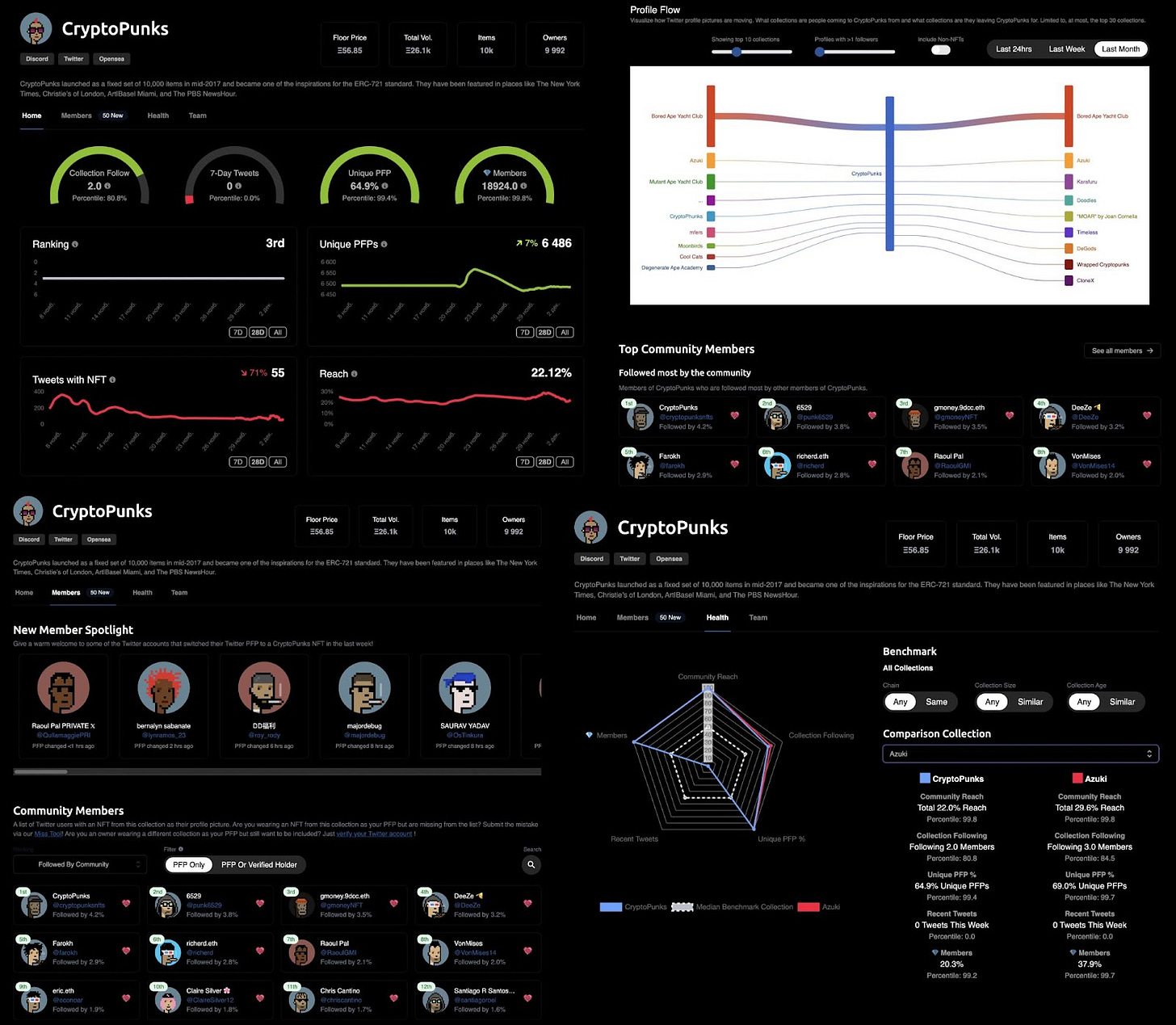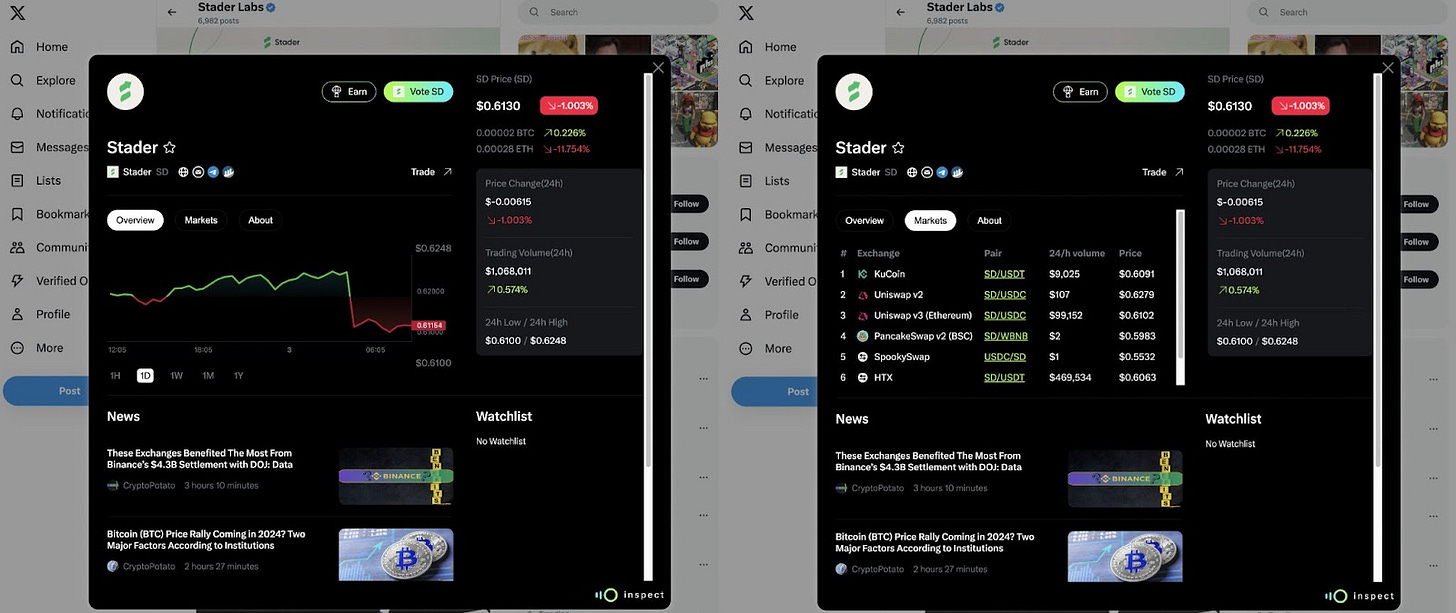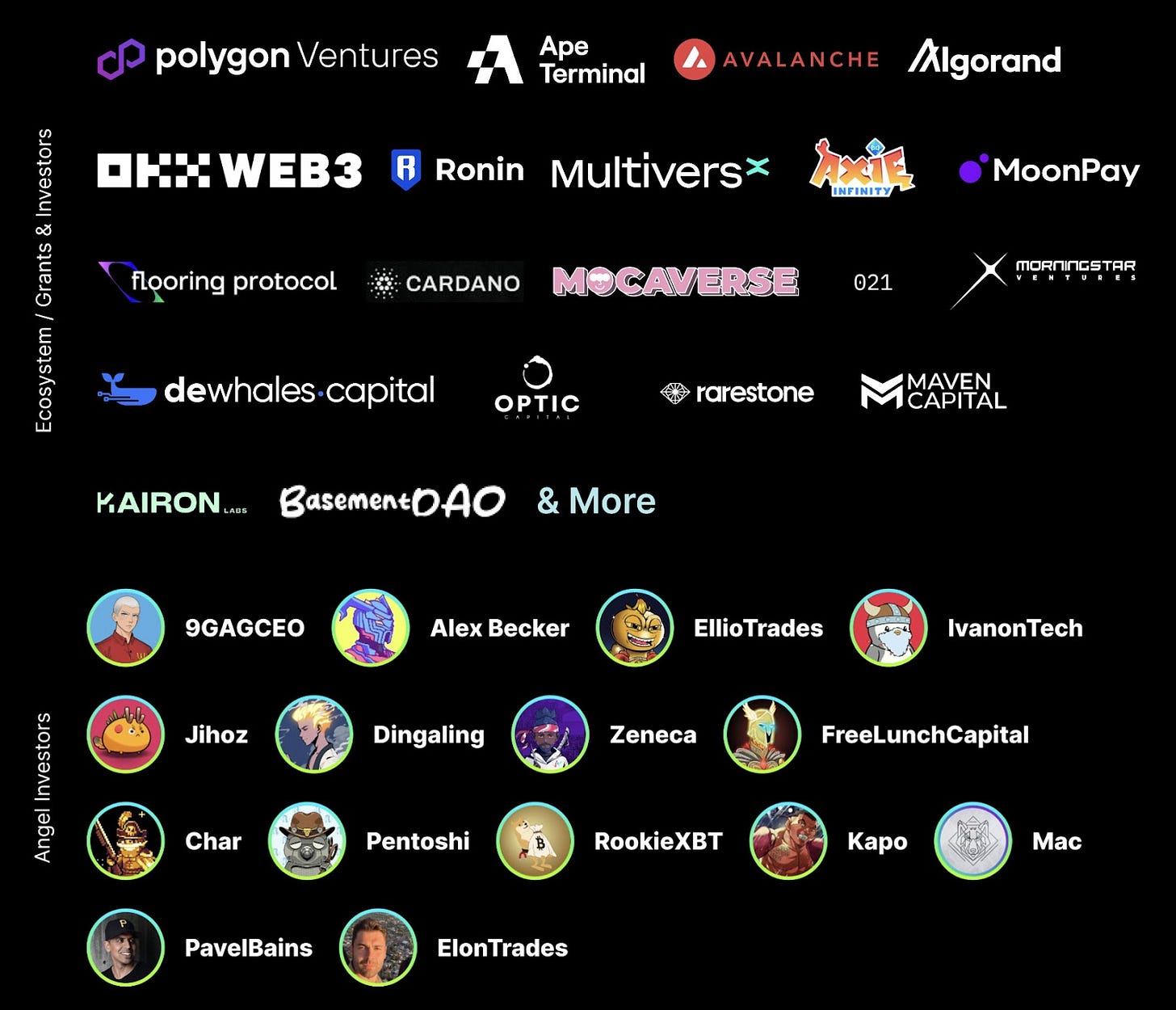Inspect Explained: Connecting Web2 and Web3
What if we look at connecting web2 and web3 not from the perspective of creating new platforms, but rather leveraging the power of a social network with an audience of several billion people?
Disclaimer: The content presented in this article, along with others, is based on opinions developed by the analysts at Dewhales and does not constitute sponsored content. At Dewhales, we firmly adhere to a transparency-first philosophy, making our wallets openly available to the public through our website or DeBank, and our articles serve as vehicles for self-expression, education, and contribution to the ecosystem.
Dewhales Capital does not provide investment advisory services to the public. Any information should not be taken as investment, accounting, tax or legal advice or as a recommendation to purchase, sell or hold or to pursue any investment style or strategy. The accuracy and appropriateness of the information is not guaranteed by Dewhales Capital.
Introduction
1. Inspect overview
2. Tokenomics and Metrics
3. Involved Players
Conclusion
Introduction
What if we combine DeBank with the most popular social network, X (Twitter)? What if users didn't have to constantly search for information about X activity, NFT collections, and fungible tokens on Google or separate analytics platforms? This is precisely what Inspect aims to achieve. With their extension, users can receive analytics on NFTs and fungible tokens directly within the Twitter interface. This further bridges the gap between social networks and crypto.
It's worth noting that over the past two years, the SocialFi sector has been particularly active, aiming to connect the worlds of finance and social networks. However, similar projects typically either act as separate overlays and websites that pull data from various sources into their interface or function as social networks offering their separate space to users (such as Lens and Farcaster). Attracting a user base to a separate platform always requires significant effort and substantial investment. Therefore, Inspect is of particular interest as it allows the integration of an existing user base with existing crypto products.
It might sound simple, doesn't it? Users see an image in X (Twitter) representing an NFT or token ticker – users click on it and get information. However, as they say, the devil is in the details. So, let's delve into what Inspect is all about.
1. Inspect overview
Inspect functions as a Chrome extension application, enabling the analysis and identification of NFTs and Fungible assets on Twitter by interacting directly with the platform. Judging by the NFT pre-compression, it also promises support for other crypto assets. Inspect can be likened to an L2 or DeBank layer on top of X (Twitter).
In addition to the Chrome extension, Inspect has a web application that displays information about NFT collections and upcoming NFT collection launches on various networks, including Ethereum, Solana, Polygon, and Avalanche. Launched in December 2021, the Inspect platform has gained significant popularity in a relatively short period, thanks to its Chrome extension with over 50,000 weekly users and a web application with more than 150,000 users.
When accessing information about an NFT collection, users receive intriguing data resulting from the on-chain data connection of collections and Twitter accounts:
If a user opens information about an NFT collection, they will receive highly interesting data derived from the correlation between on-chain data of the collections and Twitter accounts:
Mentions and new tweets related to the collection on X (Twitter).
Top community participants on X (Twitter).
Details on which collections exchange NFTs with the given collection and which other NFTs they exchange most frequently, providing insights into liquidity flows and preferences among collections.
Team members accounts.
Analysis of new participants associated with X (Twitter) accounts.
Visualization of the Health Factor, a combination of data showing overall coverage, the percentage of unique PFPs (Profile Pictures), tweet count, etc.
Comparison with other collections.
Beyond NFT information, Inspect also presents details about X (Twitter) accounts in a separate section, offering information on individual profiles: follower count dynamics, interactions with other profiles related to NFTs, profile follower analysis, relationships with NFT collections, and more. This comprehensive approach allows for a fresh perspective on NFT and token analysis, providing users with a representation and visualization of data that previously required piece-by-piece collection, often based on assumptions rather than clear indicators.
Moreover, Inspect not only provides information about the NFTs users see but also allows a reverse process—searching for collections and NFTs on Twitter, showcasing all profiles featuring a specific NFT as their avatar.
In addition to NFT information, Inspect allows users to access details about fungible tokens, displaying token prices, links to social media, websites, and the token's smart contract. Furthermore, users can directly navigate to trading on different markets from within Inspect, eliminating the need to search for and verify token contract addresses in documentation.
2. Tokenomics and Metrics
Token - $INSP with a limited supply capped 1b tokens.
Token functionality
Payment Functionality:
- Medium of Exchange: Users can utilize INSP tokens for transactions within the Inspect platform. This includes, but is not limited to, subscription fees, premium features, and transactions related to the Inspect Swap feature.
- Cost Savings: Using INSP tokens for payments can offer cost advantages, such as reduced fees compared to traditional payment methods.
- Demand Generation: As the platform gains more users and businesses, the demand for INSP tokens naturally increases, creating a sustainable network effect.Staking Functionality:
- Access Unlock: Users can stake INSP tokens to unlock additional features and functionalities within the platform. This includes gaining access to the Adspace Protocol, early access to new projects, and opportunities for whitelist participation.
- Income Generation: Staking INSP tokens can yield additional tokens as rewards, with a portion of incoming revenue allocated to dedicated staking pools.
- Governance Participation: Staking INSP tokens is a requirement for users to engage in the governance process, such as submitting proposals, participating in votes, or holding positions within the Inspect Foundation.Governance Functionality:
- Token-Based Governance: INSP tokens serve as governance tokens within the Inspect ecosystem, enabling token holders to influence and participate in decision-making processes.
- Proposal Submission: Token holders can submit proposals related to core decisions (e.g., management positions, treasury grants, token economics, new protocols), process decisions (e.g., changes to processes and procedures), or informational decisions (e.g., guidelines or community information).Adoption and Community Incentives:
- Rewards and Incentives: INSP tokens are used to reward early supporters, valuable contributors, and top holders. This includes perks like early access to whitelists, exclusive airdrop campaigns, and free NFT mints.
- Timely Communication: Perks and functionalities related to INSP tokens are communicated through social media and dedicated campaigns, fostering community engagement and participation.Inspect Swap:
- Reduced Trading Fees: INSP token holders benefit from reduced trading fees when using the Inspect Swap feature. This incentivizes token holders to use INSP for swaps, creating additional demand for the token.Inspect Ads:
- Native Ad Platform: INSP tokens are used as the primary currency to power the Inspect Ads platform. Advertisers utilize INSP tokens for placing ads, and users are rewarded in INSP tokens for their engagement with ads. This encourages user participation and ad consumption. These token utilities collectively contribute to the growth, sustainability, and governance of the Inspect ecosystem while offering value, rewards, and opportunities to its user base. As the platform evolves, these utilities may be adjusted and expanded to align with the evolving needs of the community and the broader crypto ecosystem.
3. Involved Players
Inspect has garnered support from a diverse array of backers, not only among venture capitalists and notable individuals but also within the ecosystem projects. This is owing to its user-friendly UI/UX and thoughtful approach to interacting with tokens directly through the interface. Among the backers are prominent names such as Dewhales, Morningstar Ventures, Pentoshi, Axie Infinity, Ronin, DingaLing, Optic Capital, Kairon Labs, Asteroid Capital, Polygon Ventures, Avalanche, Newtribe Ventures, Algorand Foundation, Zeneca, Sumit Kapoor, Alpha Protocol, Hash Consulting / Hasheur, Rarestone, Ivan on Tech, TheJiho.eth, Ghost Foundation, and MoonPay.
Among the partners can be identified:
Moonpay - users will be able to easily purchase cryptocurrencies in real-time directly through the Inspect software.
Avalanche - strategic co-operation to implement blockchain technology support Avalanche, whose team allocates a lot of funds to stimulate the development of the NFT-industry
Ronin - this collaboration aims to integrate Ronin-based NFTs to continue Inspect’s vision to nurture a diverse and inclusive environment.
Ethermail - technical integration, the ethermail platform serves as a bridge between users and their Web3 wallets, simplifying the process of securely managing and interacting with digital assets.
Polygon Labs - similar to the partnership with Avalanche, a strategic partnership (but more of an integration), but there is mention of cooperation in educational programmes etc
Conclusion
Two to four years ago, the integration of web3 and social networks was evolving based on decentralized principles: separate platforms, including those for NFT communities, were created with the goal of attracting users exclusively to their platform. This led to fragmentation and isolation. Now, a more centralized approach is observed, one that Inspect embodies. It involves leveraging the existing user base with the application instead of attempting to lure users to a new platform.
Inspect implements this approach quite delicately, providing users with visualized analytical data and usability that enhance the symbiosis between Twitter and crypto. After all, the current state of the crypto industry heavily relies on its social component. In this case, the simpler the tool and the more understandable the UI/UX for users, the greater the chances of development. This is another profound trend in the current crypto development cycle.
Some readers may recall Mask.io, which has similar functionality. However, as we mentioned at the beginning, the devil is in the details. Mask looks at the symbiosis of Twitter and Crypto from the perspective of the web3 audience, which is much smaller than the Twitter audience. The application immediately suggests creating a wallet with a seed phrase and overwhelms users with excessive functionality. In contrast, Inspect looks from the other side. It primarily targets web2 users, guiding them into the web3 world, holding their hand and introducing them like a child at a zoo, showing them how everything works. Moreover, this tool helps users understand how closely intertwined social networks and crypto are, as even crypto industry veterans may not always grasp this fact.
Inspect links:
Website | Twitter | Discord | Documentation | Medium










